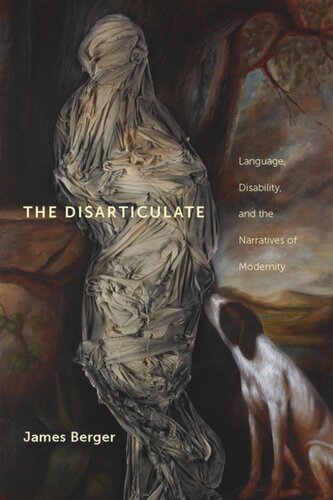

Most ebook files are in PDF format, so you can easily read them using various software such as Foxit Reader or directly on the Google Chrome browser.
Some ebook files are released by publishers in other formats such as .awz, .mobi, .epub, .fb2, etc. You may need to install specific software to read these formats on mobile/PC, such as Calibre.
Please read the tutorial at this link: https://ebookbell.com/faq
We offer FREE conversion to the popular formats you request; however, this may take some time. Therefore, right after payment, please email us, and we will try to provide the service as quickly as possible.
For some exceptional file formats or broken links (if any), please refrain from opening any disputes. Instead, email us first, and we will try to assist within a maximum of 6 hours.
EbookBell Team

4.1
30 reviewsLanguage is integral to our
social being. But what is the status of those who stand outside of language?
The mentally disabled, “wild” children, people with autism and other
neurological disorders, as well as animals, infants, angels, and artificial
intelligences, have all engaged with language from a position at its borders.
In the intricate verbal constructions of modern literature, the
‘disarticulate’—those at the edges of language—have, paradoxically, played
essential, defining roles.
Drawing on the disarticulate figures in
modern fictional works such as Billy Budd, The Sound and the Fury,
Nightwood, White Noise, and The Echo Maker, among others,
James Berger shows in this intellectually bracing study how these characters
mark sites at which aesthetic, philosophical, ethical, political, medical, and
scientific discourses converge. It is also the place of the greatest ethical
tension, as society confronts the needs and desires of “the least of its
brothers.” Berger argues that the disarticulate is that which is unaccountable
in the discourses of modernity and thus stands as an alternative to the
prevailing social order. Using literary history and theory, as well as
disability and trauma theory, he examines how these disarticulate figures
reveal modernity’s anxieties in terms of how it constructs its others.